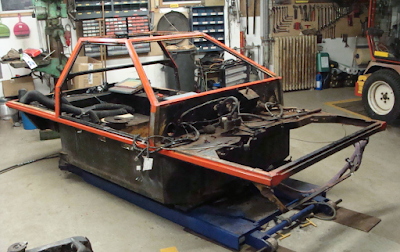It's not too often nowadays that a brand new Mini based car is launched, but it's the case now with the Mini Trafalgar Coupe, built and marketed by Garage Minimum of Kanazawa in Japan.
The car made its debut at the
25th Japan Mini Day last weekend. As you can see it is a fastback Mini in the style of the Buckle Monaco, Ecurie de Dez 2+2, New ERA Mini Coupe, Automotive Refabrication Fastback Mini and ABS Mini Coupe. But it's fully built by Garage Minimum itself, which based its demonstrator on a 1994 Mini Mpi. It certainly looks good. First the roof of the donor Mini was cut off half ways, the rear screen pillars were slightly raked, and the shape of the new roof was made using steel strips, sheet metal and filler. Next a mould was made from that to fabricate the actual roofs in fibreglass.
Garage Minimum now offers replicas to customers, priced at ¥ 700,000 for the conversion.
Contact them here for more information.
UPDATE 12:20: Another message from the manufacturer: "I am now manufacturing No. 2 car. It is planned to sell with a complete car. I think that it will be finished around January next year. Car No. 3 is ordered by another customer, and it will be produced after that."
A brand new Mini based car: the Mini Trafalgar Coupe by Garage Minimum
Picture courtesy Garage Minimum
Fibreglass roof is one part and is beautifully fitted to cut and shut Mini shell
Picture courtesy Garage Minimum
Smooth conversion with no roof guttering and seams at the back
Picture courtesy Garage Minimum
Mini based coupes came from the UK and Australia - this one is Japanese
Picture courtesy Garage Minimum
Donor vehicle was a 1994 Mini Mpi, roof was cut half ways and rear screen raked
Picture courtesy Garage Minimum
The new roof shape was now fabricated. Note modified rain gutter
Picture courtesy Garage Minimum
Next, a mould was made to reproduce more Trafalgar Coupe roofs
Picture courtesy Garage Minimum
Seen here fitted to the demonstrator before being painted and finished
Picture courtesy Garage Minimum


















































